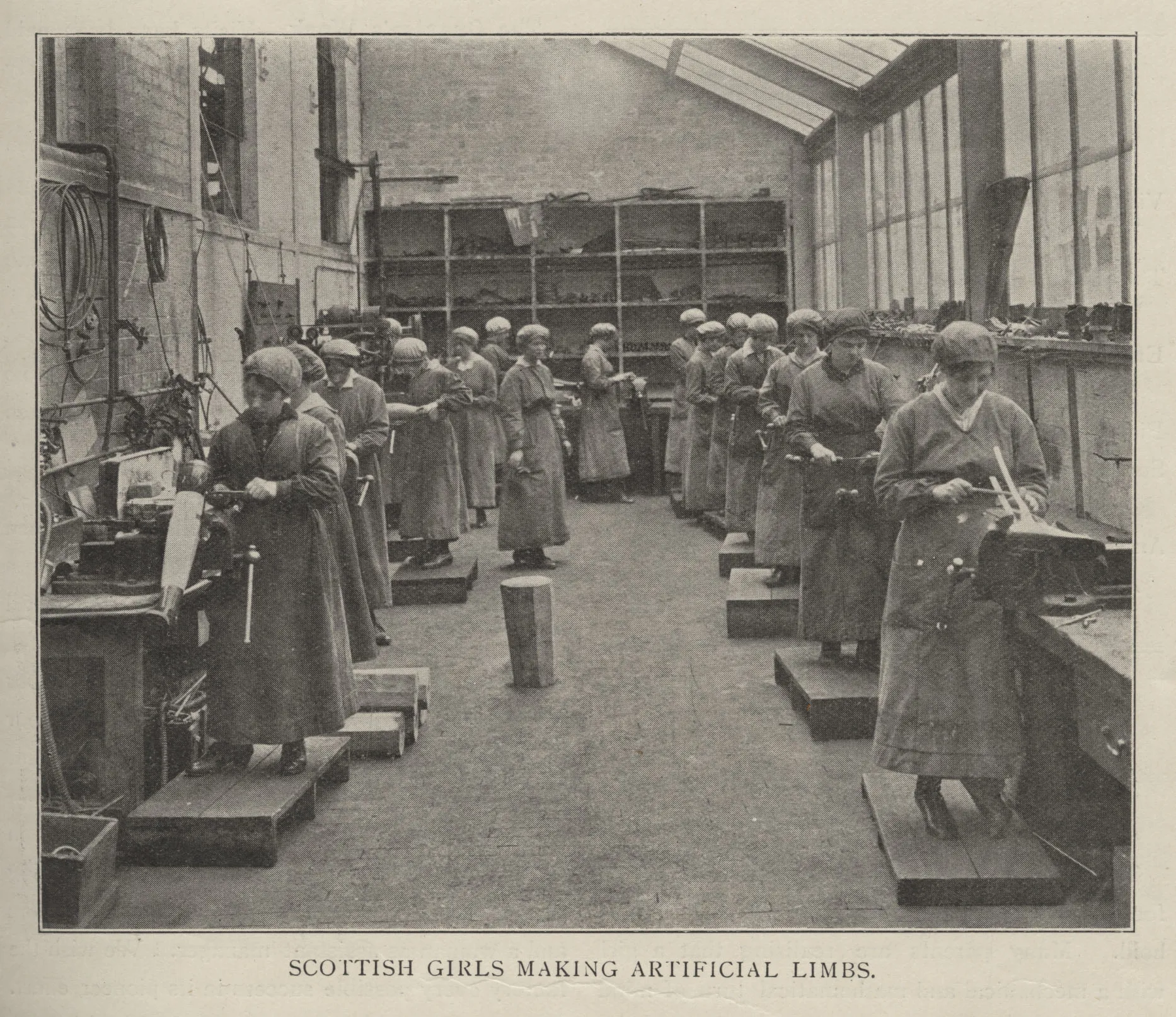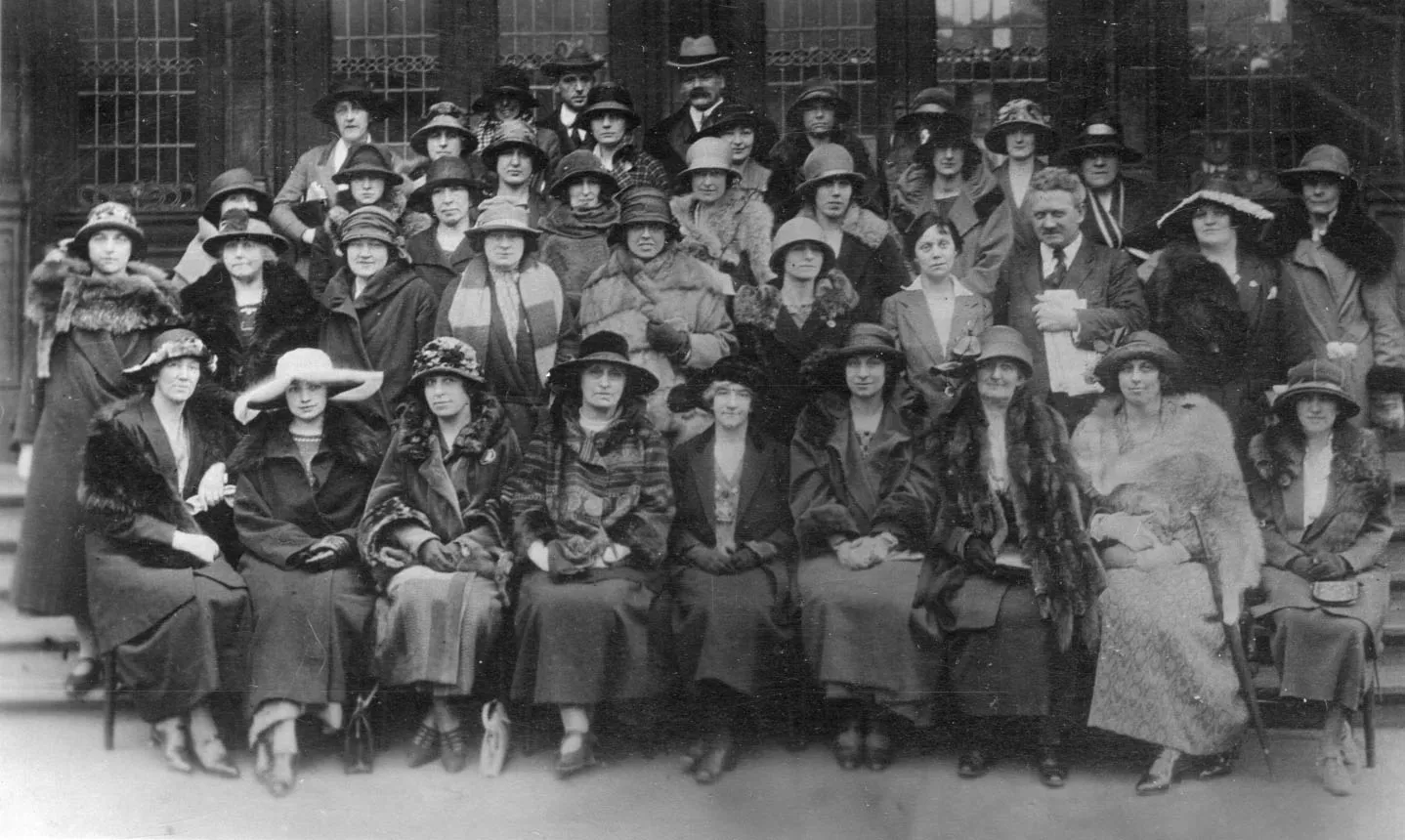The beginnings
The Women's Engineering Society (WES) was formed in 1919 [firstly] to promote the study and practice of engineering among women and, secondly, to enable technical women to meet and to facilitate the exchange of ideas respecting the interests, training and employment of technical women and the publication and communication of information on such subjects.
The impetus behind this was the training and employment of many women in technical and engineering work during the First World War when, for the first time, women had been encouraged to use their engineering skills in the war effort.
Continue the story
-
Go to Women and engineering Women and engineering -
Go to The Woman Engineer journal The Woman Engineer journal -
Go to EAW - history and policy EAW - history and policy -
Go to EAW - educating women EAW - educating women -
Go to EAW Centenary EAW Centenary -
Go to Caroline Haslett and WES Caroline Haslett and WES -
Go to WES - WW2 and beyond WES - WW2 and beyond -
Go to The Electrical Age Journal The Electrical Age Journal -
Go to IET Young Woman Engineer Awards IET Young Woman Engineer Awards

Image from The Woman Engineer Journal: Scottish girls making artificial limbs September 1920.
Women’s rights, education and careers
Inspired by the engineering opportunities that the War brought to women, especially in the manufacturing industries, the WES was established to actively pursue engineering careers.
Influenced by the women’s suffrage movement WES adopted the same colours for its logo in honour of the sacrifices women had made to win the vote only a year before in 1918.
WES became a legally recognised organisation the day after the Sex Disqualification (Removal) Act 1919 was passed in December 1919.
The Act was intended to protect the rights of women wishing to remain in or access education and the workplace. Although never strongly enforced, it was a significant change that gave hope and encouragement to women who wanted to pursue a career outside of the home in peacetime.
World War I
Many of WES’s founders had been involved in war work during the First World War. Their experience of running and managing factories, working the shop floors, design studios, workshops and engine sheds gave them experiences and skills unavailable during peacetime. Some of these women included:
Post-World War I
The Restoration of Pre-War Practices Act 1919 forced women to give up their posts in favour of returning servicemen. Many felt this to be unfair, and while most women went back (more or less contentedly) to domestic duties, a small number decided the take advantage of the training the war had given them and carry on as engineers.
The WES provided invaluable support to these women, many of whom were the only female engineers in their factories or firms.

Attendees to the WES conference 1920s.
They were able to meet with other engineers, exchange experiences, give papers and encourage girls to take up engineering as a profession. The WES also helped its members find jobs and lobbied for the acceptance of women on training courses.
One of the means of communicating to their members was through their journal, The Woman Engineer. The journals contain a wealth of knowledge not only of women in engineering but the journey of engineering in the UK since World War I. The early journals also contain technical papers by female engineers.
These Journals, dating back to 1919, have now been digitised and can be searched by keyword or browsed using page-turning technology. For more information on the digitisation project and to access the Journals please visit The Woman Engineer page.
Notable women engineers
WES has been inspiring women engineers since its formation in 1919. Find out more about inspiring individuals and WES Presidents via the WES website.
Notable women include Amy Johnson, WES President 1935-1937 and aviation pioneer. The Amy Johnson biography includes information on her record-breaking adventures plus digital copies of her records held in the IET Archives.
Other resources of interest:
- Women's Engineering Society
- History of WES
- What was a girl to do? Article on Rachel Parsons, founder of WES, by Henrietta Heald
- The Woman Engineer Journal - complete digitised volumes 1919 - 2014
- WES Centenary Trail Map - click on pins on the map to find out about historical women engineers
We’re upgrading our systems, and this includes changes to our customer and member account log in, MyIET. It’s part of our big picture plan to deliver a great experience for you and our wider engineering community.
Whilst most of our websites remain available for browsing, it will not be possible to log in to purchase products or access services from Thursday, 17 April to Wednesday, 30 April 2025. Our Member Relations team is here to help and for many of our services, including processing payments or orders, we’ll be able to support you over the phone on +44 (0)1438 765678 or email via membership@theiet.org.
We apologise for any inconvenience this may cause and thank you for your understanding.
For further information related to specific products and services, please visit our FAQs webpage.
